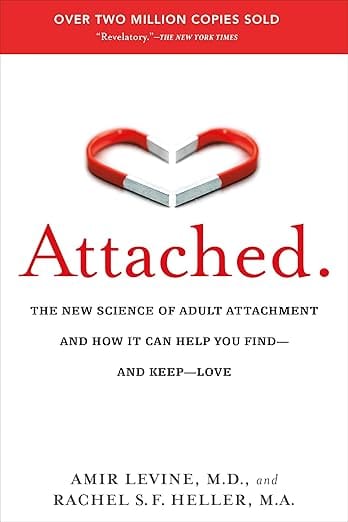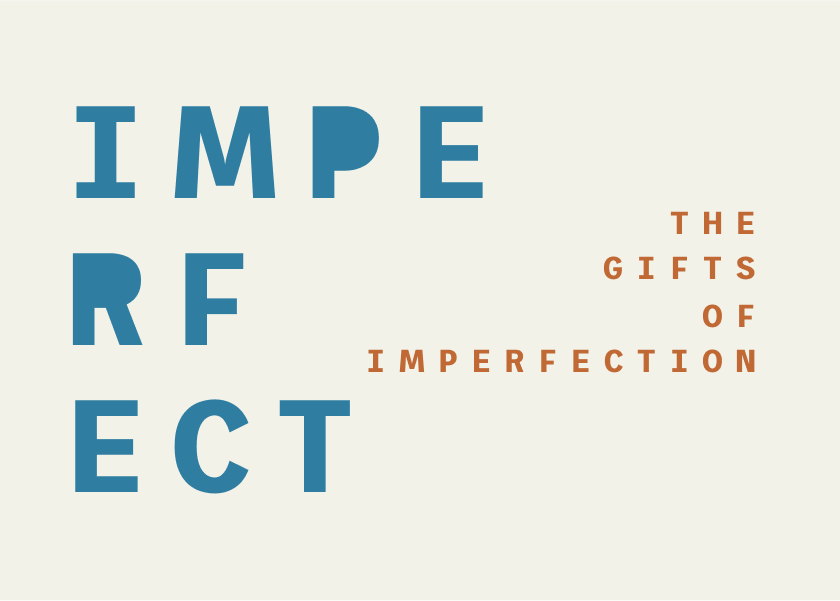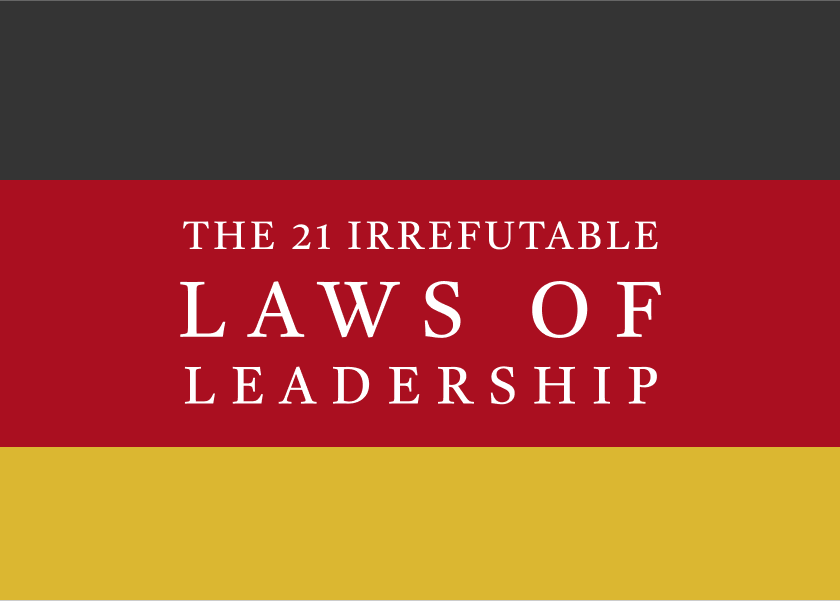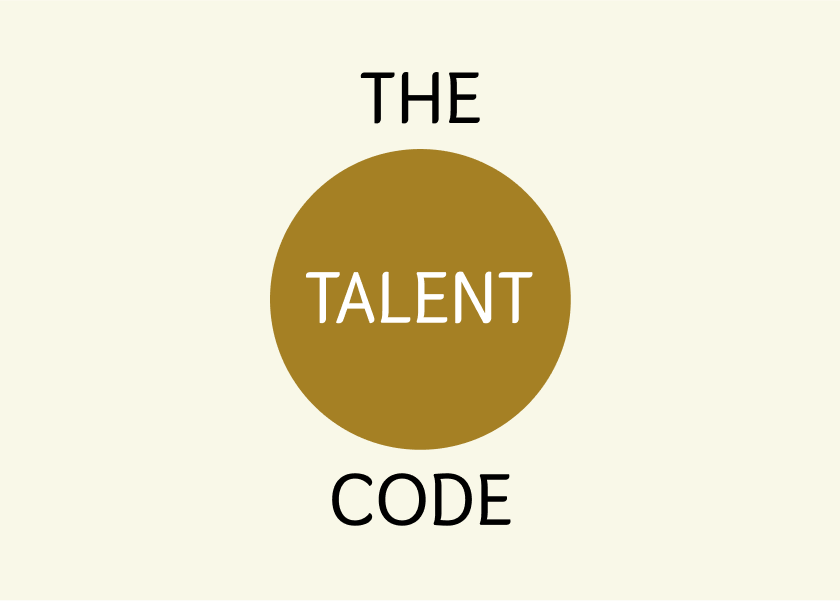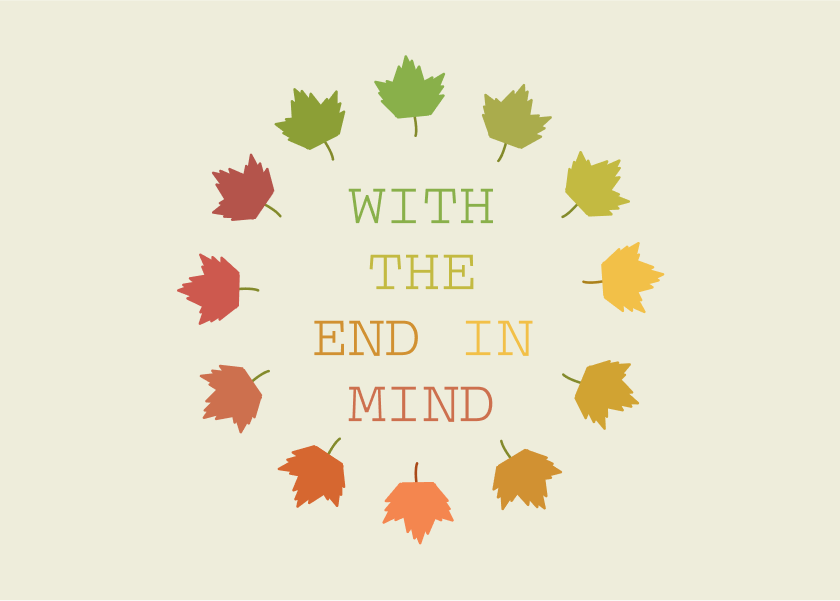Attached by Levine and Heller - Summary
Explore your relationship patterns with attachment theory. Discover your style and your partner's to understand needs and behaviors. Learn to communicate effectively and break free from harmful patterns. Find a partner who can be your secure base for a happier, healthier life.
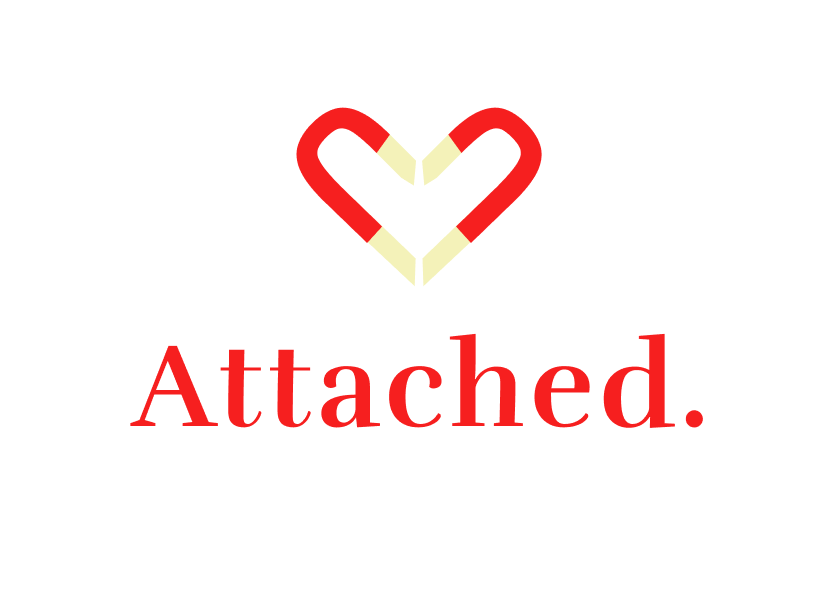
The following is a summary of the book Attached by Levine and Heller.
Listen to ShelfHelp's podcast summarising the book Attached.
Is Your Love Life a Storm-Tossed Voyage? Discover the Science of Attachment to Find Lasting Love.
Are you tired of the emotional rollercoaster of relationships? Do you feel like you and your partner speak different languages when it comes to intimacy and closeness? Attached offers a groundbreaking approach to understanding romantic relationships, using attachment theory to reveal why we behave the way we do in love. This book will equip you with the tools to not only navigate the dating world but also to cultivate deeper, more fulfilling connections. This article will give you the actionable steps to improve your love life in a fraction of the time it would take to read the whole book.
Table of Contents
- About the Author
- Who Should Read This Book?
- Key Insights and Themes
- Detailed Summary
- Review
- Actionable Takeaways
- FAQs
- Conclusion
About the Author
Attached is co-authored by Amir Levine, a psychiatrist and neuroscientist, and Rachel S.F. Heller, a social psychologist. Their combined expertise allows them to translate complex scientific research into practical, accessible advice. Levine's work in a therapeutic nursery led him to discover the powerful parallels between infant and adult attachment patterns. This discovery, coupled with Heller’s expertise in social psychology, created the foundation for this book. Their work is grounded in extensive research and clinical experience, making their insights both credible and significant. They also interviewed people from all walks of life to develop their methodology.
Who Should Read This Book?
Attached is for anyone who wants to better understand their own and others' behavior in romantic relationships. This book is particularly valuable for:
- Individuals struggling with relationship patterns: If you find yourself repeatedly drawn to the same types of partners or experiencing similar challenges in your relationships, this book can provide much-needed clarity.
- Singles looking for a lasting relationship: Learn how to identify your attachment style and the attachment styles of potential partners to make informed decisions about who to invest in emotionally.
- Couples facing communication issues and conflict: Understand how differing intimacy needs create conflict and learn specific strategies to improve communication and build a more secure connection. For example, one partner may want more closeness, while the other prefers independence.
- Those recovering from a breakup: Gain insights into the dynamics of your past relationship, and break free from harmful patterns.
Key Insights and Themes
Here are some of the key takeaways and biggest lessons from Attached:
- Attachment styles: Adults exhibit distinct attachment patterns (anxious, avoidant, and secure), similar to those of children with their parents.
- Attachment system: The brain mechanism that monitors the safety and availability of attachment figures.
- Romantic behavior: In romantic situations, people are programmed to act in a predetermined manner.
- Anxious attachment: Individuals crave intimacy but are very sensitive to perceived threats to that closeness. This can lead to clinginess and sensitivity to a partner's moods. They often live with a chronically activated attachment system.
- Avoidant attachment: People with this style idealize self-sufficiency and keep emotional distance, often using deactivating strategies. They suppress their attachment needs.
- Secure attachment: People are comfortable with intimacy, communicate needs effectively, and don't worry much about losing their partner's love.
- The dependency paradox: Independence is strengthened by depending on the right person.
- Effective communication: Learning to express your needs directly and non-accusatorily is a powerful tool for fostering intimacy.
- The Anxious-Avoidant Trap: Relationships between anxious and avoidant types can be particularly difficult due to conflicting intimacy needs.
- Importance of a Secure Base: Having a partner who is a secure base is critical for emotional and physical health.
Detailed Summary
The book is divided into four parts, each addressing key aspects of attachment theory and its application:
Part One: Your Relationship Toolkit—Deciphering Attachment Styles
- Is Love Enough?: The book opens by presenting real life stories of relationship challenges to emphasize the need to go beyond the idea that "love conquers all".
- From the Therapeutic Nursery to a Practical Science of Adult Love: The authors discuss the origins of attachment theory, its use with children, and how it applies to adult relationships. Adult attachment research has confirmed that these attachment styles exist in a wide range of countries.
- Step One: What Is My Attachment Style?: This section focuses on self-discovery. It includes a questionnaire to determine your attachment style: anxious, avoidant, or secure. The questionnaire looks at anxiety in the relationship and avoidance.
- Step Two: Cracking the Code—What Is My Partner’s Style?: This chapter provides tools to identify the attachment styles of others. You learn to look for clues in their natural behaviors and words. A quiz is provided to help with the process.
Part Two: The Three Attachment Styles in Everyday Life
- Living with a Sixth Sense for Danger: The Anxious Attachment Style: This chapter dives into the characteristics of the anxious attachment style. The attachment system is always on high alert, causing those with an anxious style to be hyper-sensitive to changes in a partner’s emotional state. It explains how the anxious attachment system works, highlighting the tendency to misinterpret emotional cues.
- It discusses why people with an anxious attachment style are prone to be in relationships with people with avoidant attachments.
- It emphasizes that activated attachment system does not equal passionate love.
- It explores how to find secure partners, and how to be authentic and use effective communication.
- Keeping Love at Arm’s Length: The Avoidant Attachment Style: This chapter explores the avoidant attachment style, framing them as "lonesome travelers" who idealize self-sufficiency and look down upon dependency.
- It notes that avoidants still have attachment needs but suppress them using various deactivating strategies.
- It provides coaching to help avoidants stop pushing love away by focusing on mutual support and finding a secure partner.
- Getting Comfortably Close: The Secure Attachment Style: This section highlights the traits and behaviors of those with a secure attachment style.
- It emphasizes their ability to respond to partners' needs and communicate effectively without getting easily upset.
- It shows that people with a secure attachment style are also more likely to forgive. It emphasizes that secure people are not all the same, and they come in many forms.
Part Three: When Attachment Styles Clash
- The Anxious-Avoidant Trap: This section discusses how clashing intimacy needs can lead to conflict and dissatisfaction. This section describes how attachment styles are stable but plastic, and that they can change when someone has a secure partner, or when they are "primed" by recalling secure role models.
- It introduces the concept of "working models" or basic belief systems when it comes to romantic relationships.
- It includes an attachment relationship inventory to identify patterns of thought and behavior in relationships.
- When Abnormal Becomes the Norm: An Attachment Guide to Breaking Up: This chapter discusses how anxious-avoidant relationships can become destructive and emotionally harmful.
- It shares a personal story to illustrate the pain of the anxious-avoidant trap.
- It provides strategies for leaving a destructive relationship and offers an inner circle test to assess your relationships.
Part Four: The Secure Way—Sharpening Your Relationship Skills
- Effective Communication: Getting the Message Across: This section stresses the importance of effective communication, especially for insecure individuals.
- It discusses how to express your needs directly and non-accusatorily.
- It emphasizes that effective communication allows you to turn a weakness into an asset. It provides advice for both anxious and avoidant individuals.
- Making Conflict Work for You: This chapter provides five secure principles for resolving conflict, showing the importance of showing concern for your partner’s well-being. It also shows that when there's a willingness to solve the problem together, both parties come closer. It explains how important it is to understand the difference between ineffective communication and secure, collaborative communication.
- It includes a workshop for identifying effective and ineffective conflict strategies.
Review
Attached is a highly valuable resource for anyone looking to understand and improve their relationships. Its strengths include:
- Clear and accessible language: The authors explain complex psychological concepts in a way that is easy for readers to understand.
- Practical advice: The book goes beyond theory by providing actionable strategies and tools for identifying attachment styles and improving communication.
- Real-life examples: The book uses numerous examples and case studies to illustrate the dynamics of different attachment styles.
- Balanced perspective: The book emphasizes that no attachment style is inherently "good" or "bad," but that each can be understood and improved.
However, there are some minor weaknesses:
- Over-simplification: Some readers might find the focus on three distinct attachment styles to be somewhat simplistic, given the complexities of human relationships.
- Potential for self-diagnosis: There is a risk that readers may self-diagnose and over apply the attachment styles to themselves and their partners.
Actionable Takeaways
Here's how to apply these lessons in real life:
- Identify Your Attachment Style: Use the questionnaire in the book to determine whether you are anxious, avoidant, or secure. Understanding your tendencies can be the first step in making meaningful changes.
- Recognize Your Partner’s Attachment Style: Observe their behavior, and use the book's guidelines to understand how they approach relationships.
- Communicate Your Needs: Practice effective communication by expressing your needs clearly and assertively, without blame or accusation.
- Manage Your Attachment System: If you are anxious, understand that your attachment system can be over-reactive, and you may need to pause before reacting. If you're avoidant, understand that you do have needs for intimacy, even if you try to suppress them.
- Choose a Secure Partner: If you are single, look for a partner who is consistent, reliable, and comfortable with intimacy. Remember, an activated attachment system is not passionate love.
- Develop a Secure Role Model: Identify someone who embodies the qualities of secure attachment and emulate their behaviors and attitudes.
- Create a Relationship Gratitude List: If you are avoidant, take time to acknowledge and appreciate the positive things that your partner does for you.
- Use Secure Principles in Conflict: Show concern, focus on the problem, and effectively communicate feelings and needs.
FAQs
- What is "Attached" about? "Attached" explores adult attachment theory and how our early childhood experiences influence our romantic relationships, offering practical ways to find lasting love.
- Is "Attached" worth reading? Yes, if you want a science-backed understanding of relationships and practical guidance on improving communication and connection with your partner.
- Can attachment styles change? Yes, while attachment styles are relatively stable, they can evolve with conscious effort, especially when in a relationship with someone secure.
Conclusion
Attached is more than just a relationship guide; it’s a roadmap to understanding yourself and your partner on a deeper level. By understanding your attachment style and applying the book's advice, you can create more secure, fulfilling relationships. Don't leave your love life to chance! Take control of your relationships and learn to find the secure, loving bond you deserve.
As an Amazon Associate, ShelfHelp may earn money from qualifying purchases. Needless to say, ShelfHelp only includes affiliate links to books we recommend and think are worth your time reading.
